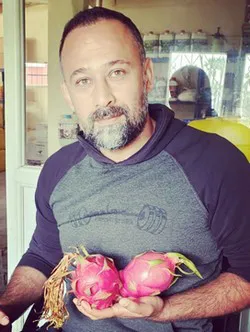
Climate change is posing great challenges to growers: for instance, the fluctuating weather may not be suitable anymore to grow specific crops in a location. At the same time, the other flip of the coin is that different crops can now be grown. This is the case for Pitaya in Turkey. “Climate conditions have changed, and now we have a climate that can be considered tropical here,” says Hayri, with Alfa Organik Tarım İşletmesi. “Until two years ago, only two hectares were dedicated to Pitaya. Now, these are more than 100.”
Building a dragon fruit greenhouse
It was indeed a couple of years ago that Hayri started looking into building a greenhouse for Pitaya cultivation. “I made a geographical and geological analysis of different areas in Turkey,” he explains. “Eventually, I found out that Adana, Tuzla, in southern Turkey, has the perfect climate for dragon fruit cultivation. So, I decided to start building the greenhouse here.”
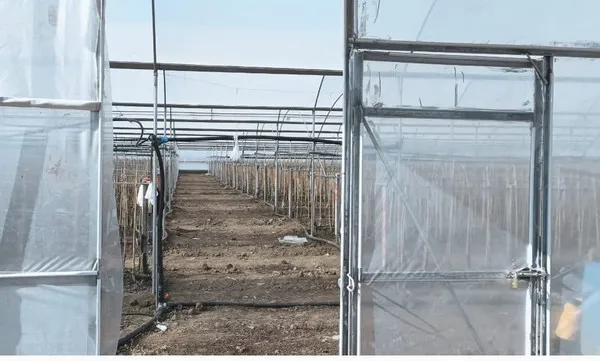
It was at that time, that real challenges began. “Setting up the greenhouse has been quite intense,” he says. “With climate change, there aren’t four seasons anymore, and we had to take that into account when designing our facility. As of now, we are getting 15 degrees Celsius on average, in winter times; that is perfect for dragon fruit cultivation.”
While Turkish winter is particularly suitable for dragon fruit, it’s not the same with summer. “It can get to 45 degrees Celsius here,” Hayri continues. “That’s why it is necessary to have a greenhouse where dragon fruit can thrive.” To protect the plants, Hayri has installed a mist watering system and windows. “Using this system and those windows is a big advantage during summer times. The greenhouse gets to around 28 degrees, which is the optimal temperature for dragon fruit.”
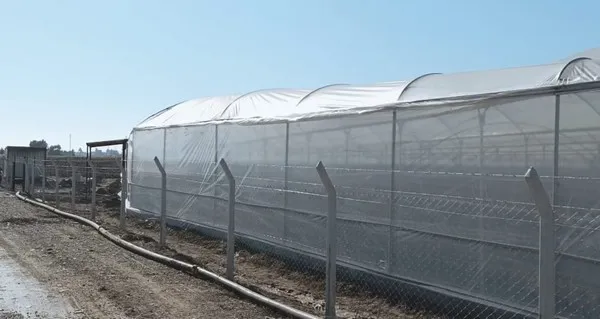
Sequential cultivation, and family tradition
Hayri states that while setting up the greenhouse has been a real challenge, tending to the plants is quite relieving. “Taking care of the greenhouse and cultivation is eventually rather easy, even though we are constantly busy with tending to the plants,” he says. The grower is utilizing sequential cultivation, with different dragon fruit cultivars growing under the same roof. “Around 9 thousand seedlings have been planted in our 24 rows,” he points out. “Everything we do here has been utterly researched, and we can indeed see that things are going beautifully.”
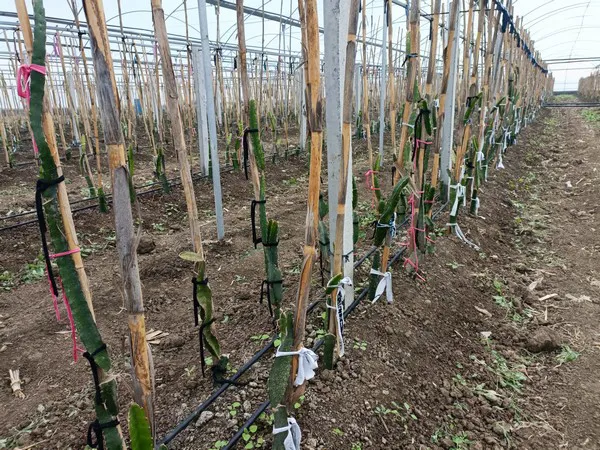
Among the many unique things that Hayri does, there is one specifically that is grounded in his own family. “I care about the quality of the product. My goal is to make the dragon fruit famous here in Turkey and show the rest of the world the quality of the production here. That is why I don’t use any chemical product, and I have everything tested and analyzed. As crop protection, I use a special mixture that is a traditional thing: you boil granulated sugar, water, plus another couple of secret ingredients, and you get this very jelly substance that we spray on a plant. This eats all the bugs, and indeed we haven’t had a single problem yet. This is the recipe of my ancestors!”
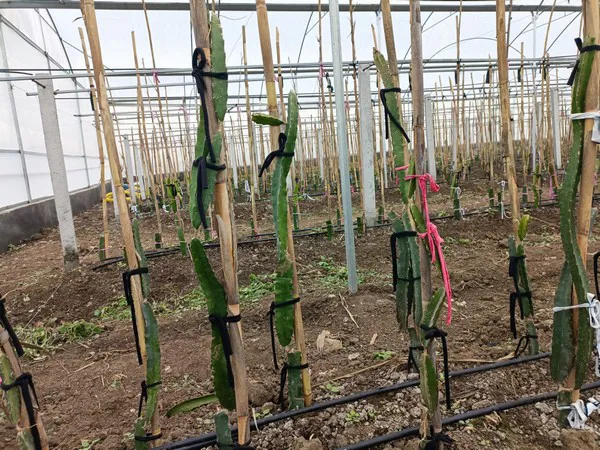
Dragon fruit exporter... and YouTuber
As Hayri said, export is very important for the company: “Export is our main target,” he says. “The fact that Turkish lira is experiencing huge inflation means that we can be extremely competitive on an international market: for that, products can be 10-15 euros per kilo. At the Turkish market, I sell it for 4 euros per kilo. This means that we can find a middle ground between those numbers and thus becoming appealing for international buyers.” Some of which have been already flocking Turkey to get a taste of such dragon fruits. “In summer, people came from Vietnam and took plants back to their country because they never tasted such a thing before. It felt like a recognition, and was also mildly amusing.”
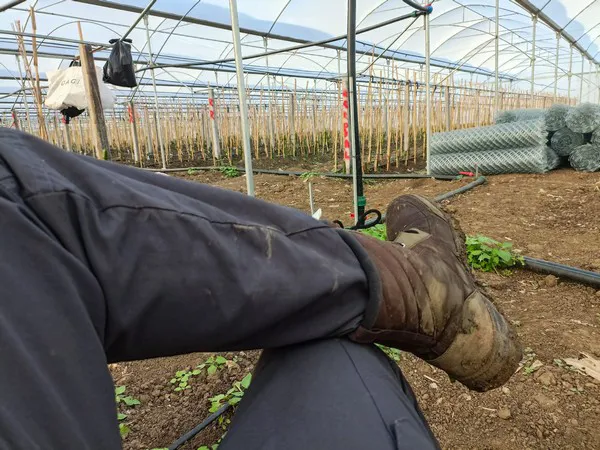
Other than a grower, Hayri can be called a YouTuber, even though he doesn’t like this tag: he has a channel where he constantly uploads videos and updates about the greenhouse. (type "alfa ejder meyvesi" on youtube for his channel)
“But I don’t want to be a YouTuber, I just want to show the details of my operation,” he says. This whole endeavor started because Hayri was quite annoyed with another dragon fruit grower. “There was another greenhouse that was set up, and they started making videos and calling themselves the king of dragon fruit, while actually sharing little to nothing about how they actually grow it. I wanted to share the technical details of what I do, and give people and investors that want to get into tropical fruit some vital info that it’s difficult to find around, if not outright impossible.”
For more information:
Alfa Organik Tarım İşletmesi
+90507 6200059
alfapitaya.com
